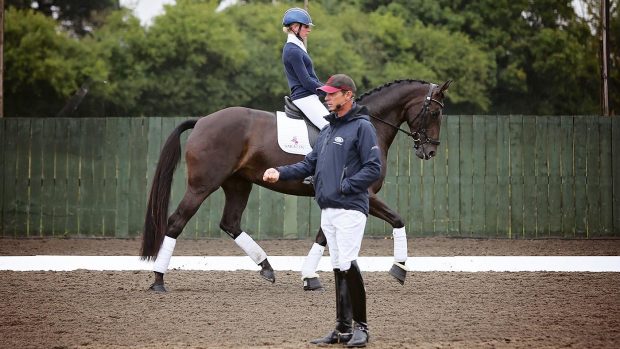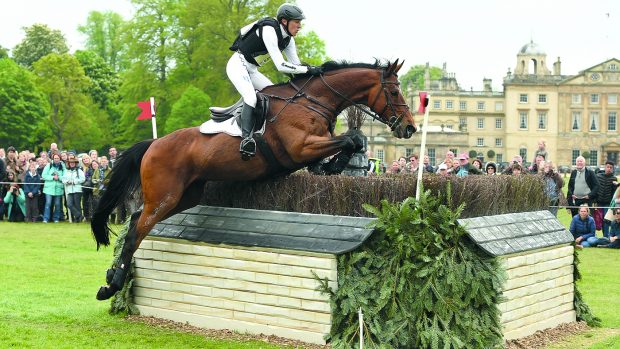Welcome to your midweek eTraining lesson with grand prix rider Keith Robertson. This week Keith explains how to improve your stretch on a circle with a view to improving your prelim test riding — and we focus on prelim 19. Enjoy your schooling and remember to let us know how you got on!
Session 1: 15m circles
In prelim 19 the first challenge you’ll face is riding an accurate 15m circle. Firstly, ensure that you know where your three-quarter line should be. Remember, a 15m circle from a marker on the long side has to come three-quarters of the way across the school. You can get away with the circle being deeper, but the width needs to be spot on.
To try at home…
Find an imaginary line down the three-quarter line and ride accurately to it. Try using a cone and riding around it to get a feel for the dimensions of the circle required.
When you start the circle you want to be able to keep turning consistently until you reach the three-quarter mark. The horse must be bending evenly around the rider’s leg, remaining soft and supple and working in a good rhythm. No collection is required at prelim; the judges want to see the horse trotting with relaxed energy.
Horses tend to fall in or out through one shoulder in one direction, therefore riders end up producing 15m circles that are bigger one way than the other. The judge will notice this, so work on controlling the outside shoulder in training and ensure that you practise this on both reins.

Session 2: trot stretches
Prelim 19 requires you to perform your first trot stretch, so it’s important that you practice this when schooling this week. Two issues can arise when doing this: giving away control and steering, and asking your horse to demonstrate it on a circle. Therefore it’s advisable to educate your horse on how to do this in terms of performing the stretch and executing a circle without full guidance from the rider.
To try at home…
Start by working on your stretch on a straight line. The horse should be seen to slowly and calmly take the contact down and forward – allowing a stretch of his topline, but avoiding curling behind the contact.
If your horse tilts his head to one side, check that you don’t have a stronger contact on that side. When he tilts, deliberately lighten the contact on that side by exaggeratedly moving your hand forward. Push him more strongly with your leg on that same side — you need to get that particular hindleg to take a more energetic step forward.
As his head straightens, allow him to reconnect to the contact, but only lightly: too strong a contact may block his hindleg from stepping forward correctly. In time, he will step into the contact equally without tilting.
Learn whether your horse is likely to drop off the stretch and come off the contact, or plunge and take you with him. You need to know were your horse stretches most consistently and correctly.
Practise this for short periods of time over smaller segments of a circle. Use these segments as a stepping-stone, and gradually build up to your horse being confident and balanced enough to take a full stretch over course of time.
Remember, the stretch doesn’t need to be for the entire circle in the test, so give yourself time to allow yourself to bring the horse back onto centre line in a balanced working trot in balanced way.
Session 3: practise the whole test
It’s now time to practise riding the test as a whole, but first watch this week’s test riding video with Isobel Wessels:
If you can not view the video player above, please click here
http://link.brightcove.com/services/player/?bctid=5307671107001




